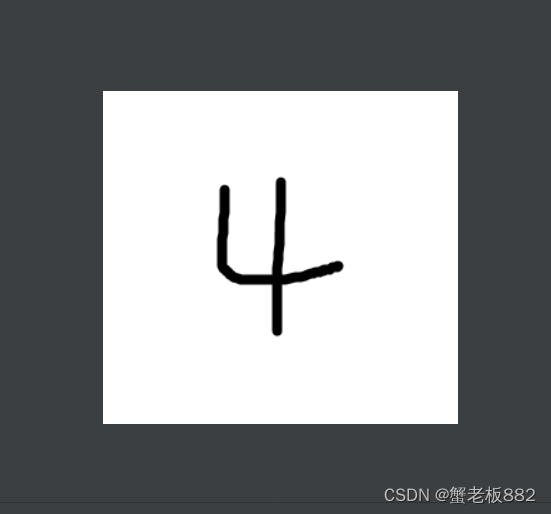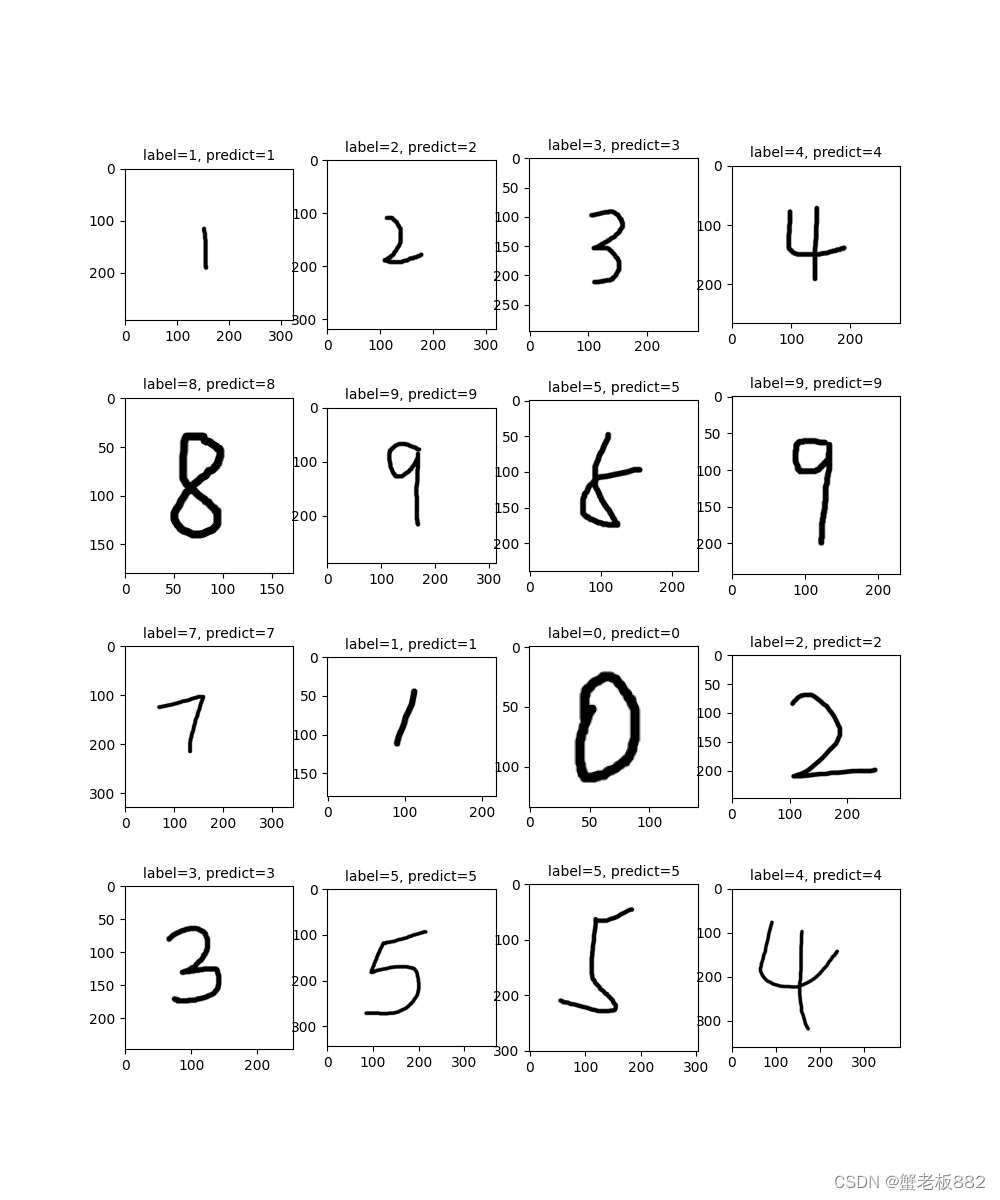基于tensorflow2、CNN的手写数字识别项目
手写数字识别实战——基于tensorflow2、CNN
项目说明
该手写数字识别实战是基于tensorflow2的深度学习项目,使用tensorflow自带的MNIST手写数据集作为数据集,使用了CNN网络,最后使用模型预测手写图片。
项目环境
基础环境:python+anaconda
框架:tensorflow2
实现步骤
一、数据处理
import tensorflow as tf
import numpy as np
import matplotlib.pyplot as plt
"""
数据处理
"""
# 加载MNIST
mnist = tf.keras.datasets.mnist
# 加载MNIST数据集为训练集和测试集
(x_train, y_train), (x_test, y_test) = mnist.load_data()
# 归一化操作
x_train, x_test = x_train / 255., x_test / 255.
# 增加维度
x_train = tf.expand_dims(x_train, -1)
x_test = tf.expand_dims(x_test, -1)
# 转换为one-hot编码
y_train = np.float32(tf.keras.utils.to_categorical(y_train, num_classes=10))
y_test = np.float32(tf.keras.utils.to_categorical(y_test, num_classes=10))
# 设置批量大小
batch_size = 256
# 载入数据为dataset
train_dataset = tf.data.Dataset.from_tensor_slices(
(x_train, y_train)).batch(batch_size).shuffle(batch_size * 10)
test_dataset = tf.data.Dataset.from_tensor_slices(
(x_test, y_test)).batch(batch_size)
二、搭建网络
"""
搭建网络
"""
# 输入
input_img=tf.keras.Input([28,28,1])
# 第一层卷积
conv1=tf.keras.layers.Conv2D(filters=32,kernel_size=3,padding='SAME',activation=tf.nn.relu)(input_img)
# 第二层卷积
conv2=tf.keras.layers.Conv2D(filters=64,kernel_size=3,padding='SAME',activation=tf.nn.relu)(conv1)
# 最大池化
pool=tf.keras.layers.MaxPool2D(pool_size=2,strides=2)(conv2)
# 第三层卷积
conv3=tf.keras.layers.Conv2D(filters=128,kernel_size=3,padding='SAME',activation=tf.nn.relu)(pool)
# flatten拉平
flat=tf.keras.layers.Flatten()(conv3)
# 全连接层
dense1=tf.keras.layers.Dense(units=512,activation=tf.nn.relu)(flat)
# 全连接层
dense2=tf.keras.layers.Dense(units=10,activation=tf.nn.softmax)(dense1)
# 指定模型的输入和输出
model=tf.keras.Model(inputs=input_img,outputs=dense2)
model.summary() #查看网络结构
三、模型训练及评估
"""
模型训练及评估
"""
# 配置训练方法
model.compile(optimizer=tf.optimizers.Adam(learning_rate=1e-3),
loss='categorical_crossentropy',metrics=['accuracy'])
# 执行训练过程
model.fit(train_dataset,epochs=10)
# 模型评估
score=model.evaluate(test_dataset)
print('last score:',score)
# 保存模型
model.save('model.h5')
四、预测单张手写数字
import tensorflow as tf
import numpy as np
import cv2
def img_show(img): # 展示图片
cv2.imshow('img',img)
cv2.waitKey(0)
"""
单张数字图片预测
"""
# 读取图片
img=cv2.imread('./detect_img/6.png') # 传入待预测图片
# print(img.shape)
# img_show(img)
# 转灰度图
img=cv2.cvtColor(img,cv2.COLOR_BGR2GRAY)
# img_show(img)
# 改变尺寸
img=cv2.resize(img,(28,28))
# img_show(img)
# 转黑底白字、归一化
img=(255-img)/255
# img_show(img)
# 转为4维
img= img.reshape((1,28,28,1))
# print(img.shape)
# 加载模型
model = tf.keras.models.load_model('model.h5')
# 预测
probabilities = model.predict(img)
print(probabilities)
prediction = np.argmax(probabilities)
prediction_values =np.max(probabilities)
print('预测: 结果:{} 概率:{:.2%}'.format(prediction,prediction_values))
最终效果
待预测手写数字图片:

预测结果:

多张预测:

存在问题
有些时候预测不准,尤其是0、8、6;
有大佬希望可以帮忙看看!!万分感谢!
参考资料:
MNSIT:https://zhuanlan.zhihu.com/p/36592188
代码参考:https://blog.csdn.net/woshinierye/article/details/105141631



